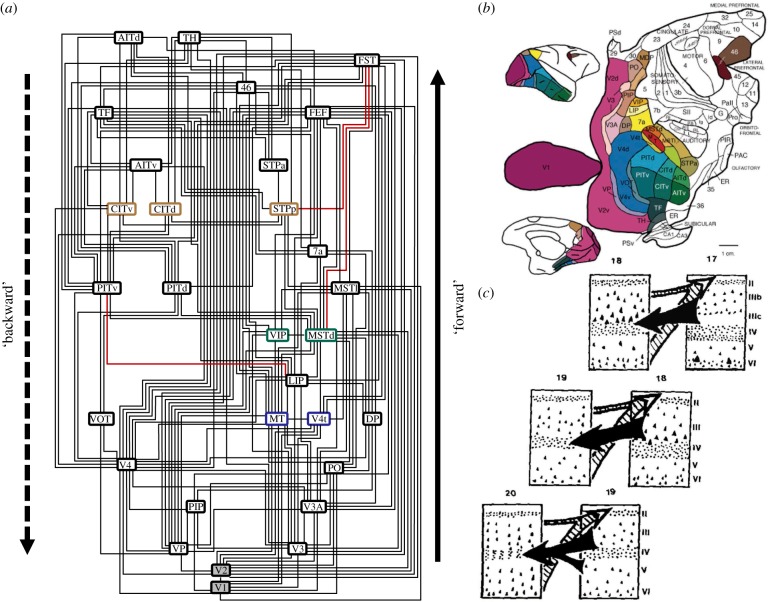Figure 1.
Visual cortical hierarchy (VCH) based on the sorting of cortico-cortical projections according to their direction inferred from the laminar patterns of projection origins and terminations. (a) Example of an optimal arrangement of visual cortical areas of the primate (macaque) cerebral cortex, according to the sorting of oriented projections, where the orientation was inferred from the laminar patterns of projection origins and terminations [6]. In this framework, projections that originate predominantly from the upper, supergranular cortical layers are considered to be ‘forward’ projections (which are arranged to point up), while projections that originate predominantly from the deep, infragranular cortical layers are considered to be ‘backward’ projections (arranged to point down), following the convention of [2]. Generally, connections in the diagram reflect reciprocal relations of laminar projections. The three red connections indicate the minimal set of (six) laminar relations that are violated in the overall arrangement. Areas with boxes of the same colour maintain their relative level positions across all optimal arrangements, while areas with a shaded background (i.e. V1 and V2) are the only areas to stay fixed on the first and second level, respectively. For more details see [6]. (b) Map of the macaque visual cortex with areas forming part of the VCH shown in colour [2]. (c) The notion of a direction of projections that is associated with laminar patterns was derived from the observation that laminar projection origins and terminations show highly regular, repeating patterns as one proceeds from areas at the sensory periphery (A17, striate cortex, primary visual cortex) to more central areas of the brain (e.g. A18, A19) [7]. (Online version in colour.)

